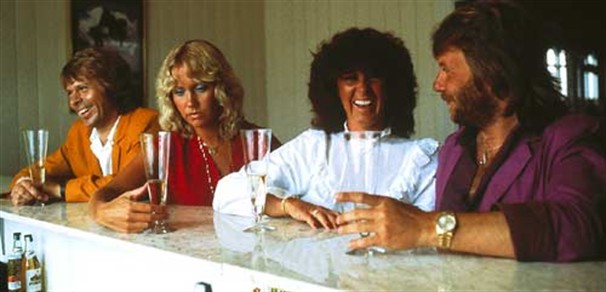In Focus: The Winner Takes It All – The Story Of A Masterpiece
Often lauded as one of ABBA’s most accomplished recordings, The Winner Takes It All was painstakingly worked out in the studio – and featured personal lyrics that would affect people for decades to come.
Stiff and metrical
When ABBA’s Benny Andersson and Björn Ulvaeus brought their latest song to Polar Music Studios in Stockholm, Sweden, on June 2, 1980, they knew they had a winner on their hands. Even when they were writing it – just the two of them with piano, guitar and hummed nonsense words – they both got a great kick out of their new creation. It was, in some respects, a fairly “simple” composition, with only two melody lines repeated throughout, but that deceptive simplicity was also part of its strength. As yet, though, the two song writers hadn’t quite worked out how to best record it, and its final lyrics had not been written: at this stage, the song was still adorned with the working title ‘The Story Of My Life’. Also, as was usually the case, the tune they brought to the studio could end up with any type of arrangement; nothing was fixed, nothing was set in stone.
With Benny on keyboards and with the aid of session musicians Lasse Wellander (guitar), Mike Watson (bass) and Ola Brunkert (drums), this first attempt at the song took them into a fairly uptempo arrangement: an insistent beat, punctuated by handclaps – a bit “stiff and metrical”, as Benny would later describe it. It actually wasn’t a bad backing track and it could easily have formed the basis for an excellent pop song in its genre. A rough mix of this instrumental recording was copied onto a cassette tape for Björn and Benny.
A French “chanson”
As the two song writers drove home to the suburb of Lidingö, where they both lived at the time, they took a fresh listen to the backing track. They still sensed that they were onto something with this tune, but they concluded that they hadn’t quite captured its full potential. “We felt that it was a really important song, and we wanted to make sure that we didn’t ‘lose’ it”, Björn later recalled.
Something was needed to loosen it up, and it was Benny who found the key that would unlock the song: a descending melody line, played on the piano during the intro and then reoccurring throughout the tune. This simple yet effective device rubbed off the edges of the square, giving the tune a smoother flow: it was lifted out of the stiff and metrical territory and into a romantic French “chanson” landscape. A new backing track was recorded four days after the first attempt, on June 6, and it was certainly an improvement. The musicians were the same this time, with the addition of percussionist Åke Sundqvist, who no doubt contributed to the rhythmic elasticity of this second version.

By the time the new arrangement had been arrived at, the “chanson” feel of the song started to give Björn ideas for lyrics. He even recorded a demo vocal, where he sang in nonsense French. Björn often had a lead vocal on ABBA albums, and there were actually suggestions that he should be the featured singer on the finished recording of this tune. ”It’s a good thing I didn’t,” he determined many years later. This was clearly a song that called for expert singing by one of the girls.
But first of all Björn had to write the final lyrics. ‘The Story Of My Life’ had only been a preliminary title, words to sing while the song was being written. Now it was time for him to bring the cassette tape of the backing track home, listen to it over and over, and find a “message” in the tune – what was it trying to say to him? As he would later recall, he had a few glasses of whisky during the writing process: “not a whole bottle, but definitely a couple of big snifters!” Although he usually felt that writing “under the influence” never worked – the following day the lyrics would usually look quite unimpressive – for some reason this time it really helped him. “Don’t ask me why or how: ”, he recalled in the book Mamma Mia! – How Can I Resist You? “I hardly had to change a word, which was fantastic.”
A small masterpiece
The finished lyrics were entitled ‘The Winner Takes It All’ and had an especially personal, emotional resonance for Björn. Although he has pointed out that most of the song is pure fiction, he has also admitted that its narrative – dealing with a couple going their separate ways and the heartbreak that inevitably follows – had its roots in his and Agnetha’s separation, 18 months previously. It almost went without saying that Agnetha was to be the lead vocalist on this song. As she and Frida arrived at the studio to add their vocal magic to the recording, some of those present felt the tears welling up in their eyes. Agnetha herself has often singled out ‘The Winner Takes It All’ as her favourite from the ABBA years. “The lyrics are deeply personal, and the music is unsurpassed. Singing it was like acting a part. I mustn’t let my feelings take over. It was quite a while afterwards before I realised that we’d made a small masterpiece.”
The recording was completed and mixed on June 18, and a few weeks later, on July 12, the group reconvened in the town of Marstrand, on the west coast of Sweden, to shoot the Lasse Hallström-directed promo clip for the song. Hallström deliberately chose to visualise Agnetha’s role as the lonely, abandoned woman, as depicted in the lyrics. It made for a very poignant clip, with the message seemingly being: “This is what has become of the group that used to consist of two happy couples – the illusion has been shattered.”
Released as a single on July 21, 1980, ‘The Winner Takes It All’ quickly became a major hit, hitting number one in at least five countries and entering the Top Ten in plenty more. Since first being released, ‘The Winner Takes It All’ has almost taken on a life of its own, offering consolation and catharsis for hundreds of thousands, if not millions, of couples who have found that they can no longer keep their relationship together. The song has also become the major show stopper in the Mamma Mia! musical – indeed, producer Judy Craymer has admitted that the emotional power of ‘The Winner Takes It All’ was what gave her the idea for the show in the first place. But, with all due respect to everyone who has given their all in their interpretations of the song, few would dispute that the original version, performed by ABBA themselves, will always remain unsurpassed.

